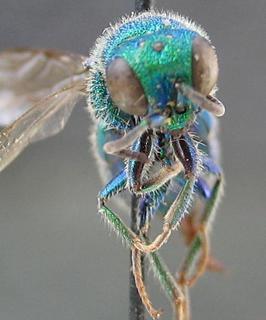
Native Bee Inventory and Monitoring Lab; Photographer: Erika Tucker · 1
Chrysis tripartita, face |
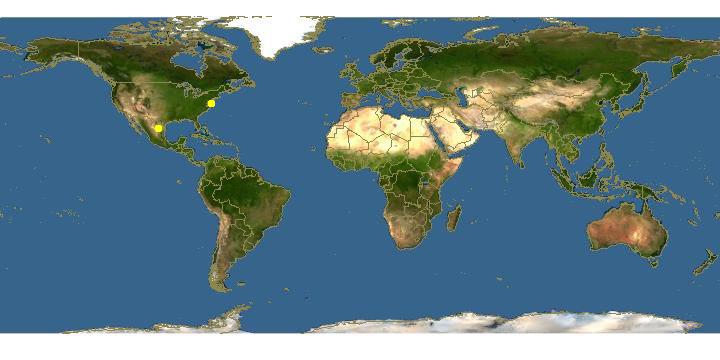
Click on map for details about points.
|
80x5 -
240x3 -
240x4 -
320x1 -
320x2 -
320x3 -
640x1 -
640x2
Set display option above.
Click on
images to enlarge. |
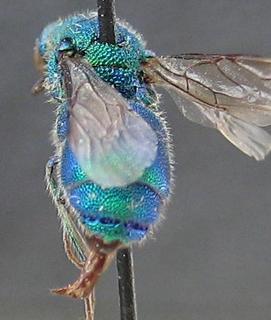
Native Bee Inventory and Monitoring Lab; Photographer: Erika Tucker · 1
Chrysis tripartita, tail |
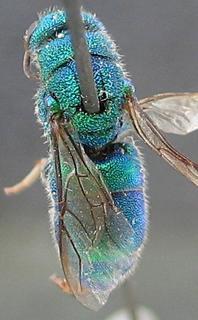
Native Bee Inventory and Monitoring Lab; Photographer: Erika Tucker · 1
Chrysis tripartita, top |
|
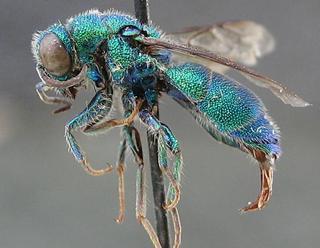
Native Bee Inventory and Monitoring Lab; Photographer: Erika Tucker · 1
Chrysis tripartita |
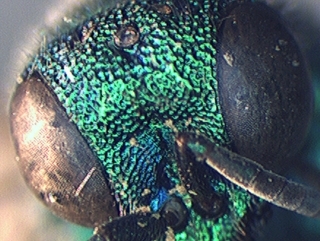
Native Bee Inventory and Monitoring Lab; Photographer: Erika Tucker · 1
Chrysis tripartita, face |
|
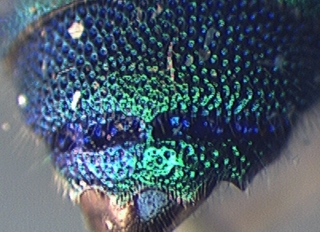
Native Bee Inventory and Monitoring Lab; Photographer: Erika Tucker · 1
Chrysis tripartita, tail |
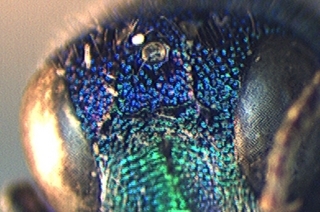
Native Bee Inventory and Monitoring Lab; Photographer: Erika Tucker · 1
Chrysis tripartita, face |
|
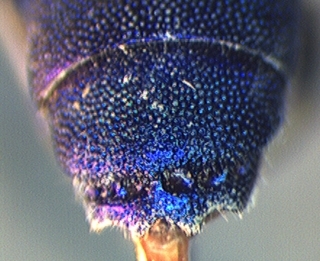
Native Bee Inventory and Monitoring Lab; Photographer: Erika Tucker · 1
Chrysis tripartita, tail |
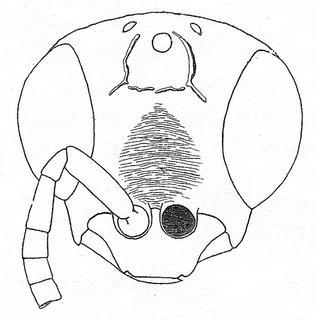
R. M. Bohart L. S. Kimsey, 1982 · 1
Chrysis tripartita, face |
|
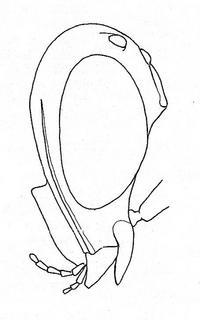
R. M. Bohart L. S. Kimsey, 1982 · 1
Chrysis tripartita, head |
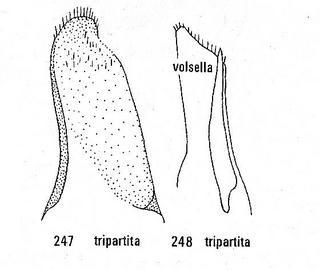
R. M. Bohart L. S. Kimsey, 1982 · 1
Chrysis tripartita, male genitalia |
|
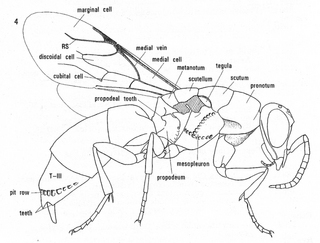
R. M. Bohart L. S. Kimsey, 1982 · 1
Chrysis tripartita |
|
Overview |
Taken from:
R. M. Bohart and L. S. Kimsey. 1982. A Synopsis of the Chrysididae in America North of Mexico.
Chrysis tripartita Aaron
(Figs. 2, 3, 4, 247, 248)
Chrysis tripartita Aaron 1885:238. Holotype female, Arizona (ANSP).
Chrysis indeterminabilis Bischoff 1910:476. biotype female, Sierra Mixteca. Mexico (Berlin).
Discussion: This relatively large species has an unusually long face (fig. 2). The long malar space separates it from others in its species group. Also distinctive is the irregular transverse frontal carina which nearly encloses the midocellus (fig. 2). The genal carina is more distinct from the eye than in related forms. T-III has the lateral margin straight, a poorly defined prepit bulge, and the teeth are short and distally rounded. Modal body length is 8-9 mm. Male genitalia are distinctive. The paramere has a weak spot near the tip (fig. 246), the digitus is moderately slender, and the cuspis has a slanting apex (fig. 248).
Hosts: Anthidium collectum Huard and maculosum Cresson (Grigarick and Stange 1968, Horning 1971).
Material examined: 87 males, 72 females including types of tripartita and indeterminabilis.
Distribution: widespread in U.S. from Georgia, Missouri, and Iowa to Colorado and Oregon in the north; and Texas, Arizona and California in the south. It also occurs in Mexico, having been recorded in most states from Chihuahua and Baja California to Puebla.
Species group of Chrysis lauta Cresson
Diagnosis: Male F-I longer than or rarely equal to (vagabunda) F-III, 1.3-2.0 times as long as broad, female F-I 1.5-2.2 times; subantennal distance 1.3-2.5 MOD and at least slightly longer than malar space which is 0.5-2.0 MOD; transverse frontal carina absent or rarely present, partial and irregular; genal carina usually almost touching eye opposite base of forecoxa (fig. 4); midocellus not lidded; mesopleuron and metanotum rather simple; T-II with a weak and usually punctate median longitudinal ridge; T-III distally with a simple edge and four rather short teeth, lateral edge nearly straight, a little angled out medially, or weakly convex.
Included species: coloradica Bohart, florissanticola Rohwer, lauta Cresson, rivalis Bohart, tripartita Aaron, vagabunda Bohart, and xerophila Bohart.
Discussion: Except for the unlidded ocelli in the lauta, group, relationships with the propria group seem rather close. Hosts are not certain for the propria group but several of the lauta group are known to attack species of the megachilid genus Anthidium.
Key to Chrysis lauta group
1. Subantennal distance and malar space each at least 2.0 MOD, transverse frontal carina with backward branches which enclose midocellus or nearly so ………….tripartita Aaron
Subantennal distance and malar space not both as much as 2.0 MOD, transverse
frontal carina quite weak or absent ……………………………………………………….2
2. Subantennal distance about 2 MOD ………………………………………lauta Cresson
Subantennal distance not more than 1.5 MOD ………………………………………..3
3. F-I 1.3-1.8 times as long as broad, T-III pit row deep with many pits confluent
(fig. 173) ………………………………………………………………..vagabunda Bohart
F-I about 2.0 times as long as broad, T-III pit row various ……………………………4
4. T-II shiny toward apex, punctures separated by nearly a puncture diameter; T-III pit
row usually shallow, pits sometimes evanescent (fig. 174) ……….florissanticola Rohwer
T-II not shiny toward apex, punctures close; T-III pit row often deep ………………...5
5. Punctation of T-III rather fine, much more so than on scutum, S-II with two large and practically contiguous black spots …………………………………………..rivalis Bohart
Punctation of T-III coarse, about as on scutum, S-II markings various …………….....6
6. Male flagellum with ventral erect hair, much of it as long as flagellomere diameters (fig. 202); female S-II with large dark basal spots or a dark basal band, terga usually deep blue ………………………………………………………………..coloradica Bohart
Male flagellum without obvious erect hair; female S-II without dark spots or only
vague discolorations, terga more green than blue ………………………..xerophila Bohart
|
|
| Supported by | |
Updated: 2024-04-25 13:55:31 gmt
|